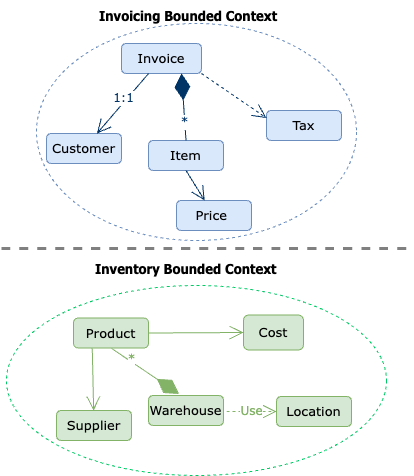Domain Analysis

EventStorming is a collaborative method we employ for exploring complex business domains. EventStorming is an innovative workshop format that brings domain experts and development teams together to visualize and map out critical events, processes, and interactions within your business domain.
Using a combination of sticky notes and a large modeling surface, participants collaboratively create a visual representation of the system, capturing events, commands, aggregates, and other important elements.
EventStorming sessions can also be conducted online; we utilize tools like Miro, which provides virtual whiteboards for remote collaboration. The outputs of EventStorming sessions include:
- A comprehensive visual map of your business domain
- A shared understanding of the system among stakeholders
- Identification of critical areas for further investigation or improvement.
Another technique we employ during business domain exploration is Domain Storytelling, a powerful method to explore and capture complex business domains. The Storytelling approach leverages the power of narratives to convey information and a shared understanding among stakeholders.
Like EventStorming, Storytelling helps bridge the gap between technical and non-technical stakeholders and fosters creative problem-solving. This approach helps align the system design and development with the business needs of your target audience.
We use tools such as Egon.io, Miro, or physical index cards during the sessions. The outputs of Domain Storytelling sessions include:
- A visual representation of the business domain.
- A shared ubiquitous language that is used consistently by all team members.
- The identification and the definition of the bounded contexts within the business domain.

Define API Boundaries

Domain-Driven Design (DDD) is a powerful approach that, in addition to helping develop a deep understanding of your business domain using techniques such as EventStorming and StoryTelling, can play a significant role in identifying API boundaries when migrating from a monolithic architecture to microservices. DDD focuses on modeling and breaking the business domain into smaller, cohesive components known as Bounded Contexts. They represent logical boundaries within the business domain where specific models, rules, and policies apply.
Identifying these bounded contexts helps design modular and maintainable microservices by focusing on separating concerns and reducing interdependencies. Each bounded context can become a potential candidate for a microservice with well-defined API boundaries.
In addition to the Bounded Contexts, DDD uses other concepts to help understand the business domain and define the API boundaries:
- Promotes the development of a shared ubiquitous language, which is a set of common terms and definitions used by all team members to describe the business domain.
- Introduces the concept of aggregates, clusters of related domain objects that can be treated as a single unit. Aggregates help define transactional boundaries and ensure data consistency within the context.
- Uses Context Mapping techniques for mapping relationships and interactions between different bounded contexts. This helps you identify the APIs for communication between microservices, ensuring each microservice has a well-defined responsibility and clear API boundaries.
API Design-First
A key technique we employ during the API design phase is the API Design-First approach, a strategic methodology that emphasizes defining and designing the API contract before any implementation begins.
The API Design-First approach is centered on creating a clear and comprehensive API specification using industry-standard formats like OpenAPI. By defining the API’s resources, methods, parameters, and response structures upfront, we ensure that the API is well-designed, consistent, and easy to understand and use by both internal developers and external consumers.
The API Design-First approach promotes collaboration between stakeholders, encourages early feedback, and reduces the risk of costly changes or refactoring during the development phase. This approach enables you to build robust, scalable, and maintainable APIs that align with your business requirements and serve as a solid foundation for your applications.

API Implementation

Implementing microservices using Clean Architecture principles is an effective approach to building maintainable, scalable, and testable systems. Clean Architecture emphasizes the separation of concerns, modular design, and dependency inversion, ensuring that the system is easy to understand and modify as needed. By following these principles, you can create microservices that are resilient to change and adaptable to the evolving needs of your business.
Start by defining the domain entities and business rules at the core of your application. These entities and rules should be independent of any specific framework or infrastructure, focusing solely on the business logic. Encapsulate the core business logic within use cases or services representing your system’s operations. This separation ensures that the business logic remains uncluttered by external concerns.
Next, define the adapters, which bridge the core business logic and the external frameworks and infrastructure. These adapters can include data access layers, API controllers, and other components responsible for handling input and output operations. By isolating these adapters from the core business logic, you can easily swap out frameworks or infrastructure components without impacting the core functionality of your microservices.
The Clean Architecture principles promote a clear separation of concerns and ensure that your microservices remain focused on delivering value to your business while remaining adaptable to the evolving needs of your organization.
Cloud Native
We help businesses leverage the full potential of modern cloud platforms, ensuring their applications are scalable, resilient, and cost-effective. We recognize that adopting cloud-native technologies and practices can be a challenging and complex process, and our goal is to simplify this journey for you.
Cloud-native architectures are built using a set of principles and technologies that enable applications to take advantage of cloud computing’s unique characteristics. By designing and implementing applications to be cloud-native, we can ensure they are optimized for rapid scaling, resilience to failures, and seamless deployment and management in cloud environments.
We aim to help businesses successfully navigate the transition to cloud-native applications, unlocking the full potential of modern cloud platforms and delivering scalable, resilient, and cost-effective solutions.

